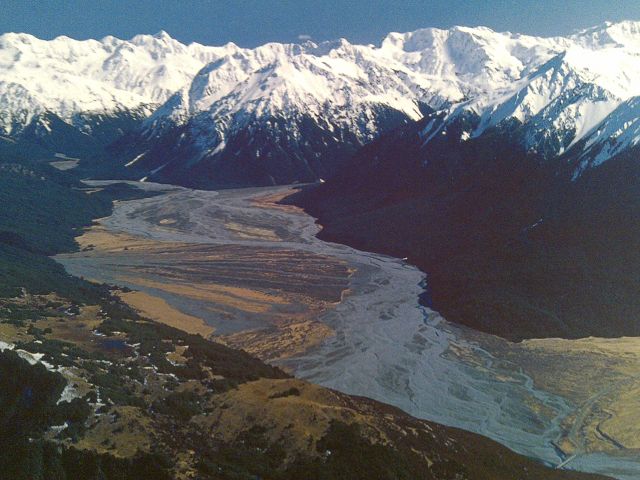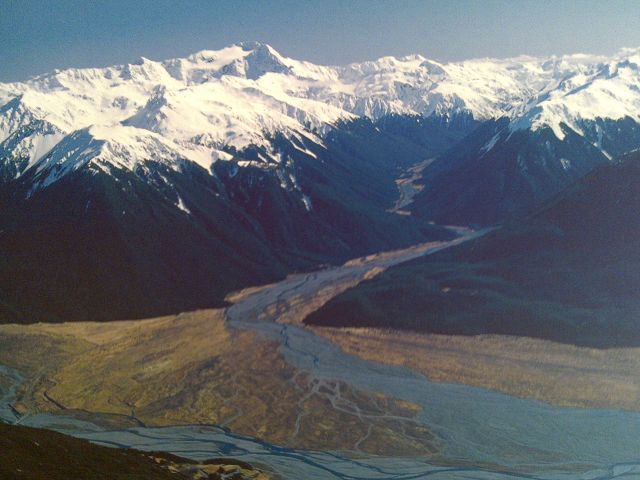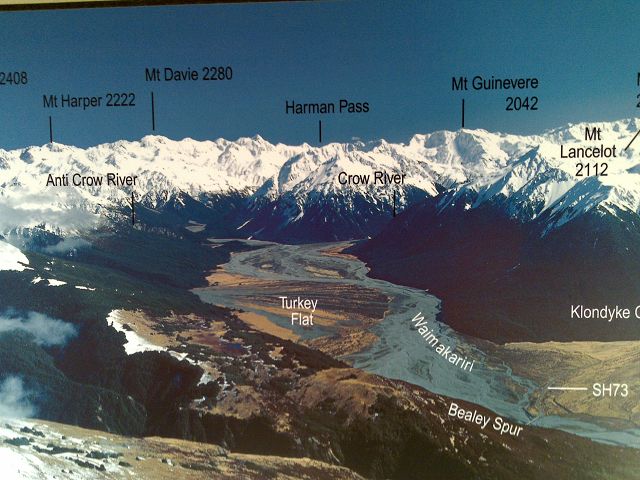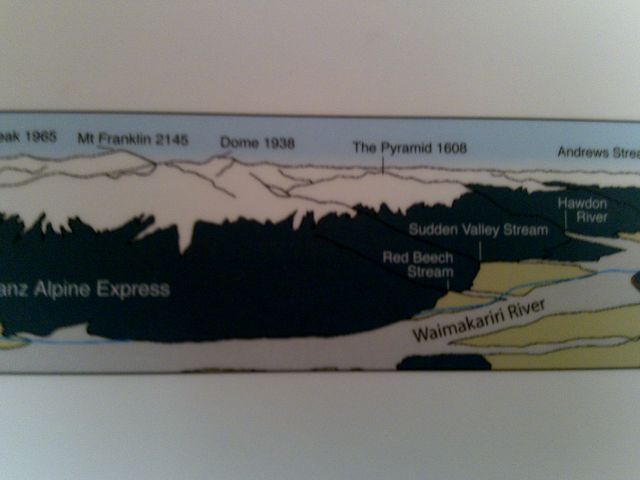Arthur's Pass National Park is one of New Zealand's most scenic and rugged national parks, located in the Southern Alps on the South Island. It is part of the Te Wahipounamu World Heritage Area, which is known for its spectacular mountain landscapes, deep valleys, alpine forests, and diverse wildlife. This national park is a fantastic destination for outdoor enthusiasts who enjoy hiking, mountaineering, birdwatching, and experiencing New Zealand’s dramatic natural beauty.
Key Features of Arthur's Pass National Park:
1. Geography and Landscape
- Southern Alps: The park is situated within the Southern Alps mountain range, which forms the backbone of New Zealand’s South Island. It offers breathtaking views of towering mountains, alpine valleys, and rivers.
- Alpine Terrain: Arthur's Pass is renowned for its rugged alpine terrain, with snow-capped peaks, glacial valleys, alpine meadows, and crystal-clear rivers. The park's highest point is Mount Rolleston (2,798 meters), and the park's dramatic landscapes make it a stunning location for photography and exploration.
- Arthur's Pass Village: The park’s main access point is Arthur's Pass Village, which is located right on the Arthur’s Pass, the highest point on the Arthur's Pass Highway (State Highway 73). The village is a small settlement with basic facilities, accommodation, and a visitor center.
2. Hiking and Walking Trails
- Arthur's Pass Track: This short, 2-hour walk is one of the easiest ways to explore the park. It offers panoramic views of the surrounding mountains, valleys, and the Bealey River. It's an ideal introduction to the park’s landscapes.
- Avalanche Peak Track: One of the most popular and rewarding hikes in the park, the Avalanche Peak Track is a challenging 6-8 hour hike that takes you to the summit of Avalanche Peak (1,833 meters). The track offers stunning views of the Southern Alps and is known for its alpine wildflowers and dramatic scenery.
- Temple Basin Track: This 4-hour return hike takes you to the Temple Basin Ski Field, where you can enjoy views of the surrounding mountains. The track is relatively steep and offers a great alpine experience with views of the Craigieburn Range.
- Otira Valley Track: A more relaxed and easy walk, this 1-2 hour track follows the Otira River and leads through beautiful forested areas, providing great views of the valley and surrounding peaks.
- Bealey Spur Track: This 2-3 hour hike follows the Bealey Spur and offers panoramic views of the Bealey Valley and the Southern Alps. It's an excellent option for those looking for a shorter walk with stunning vistas.
- Gillespie Pass Circuit: For experienced hikers, this 4-5 day circuit provides a more challenging route through the park’s rugged terrain, with beautiful alpine landscapes and pristine wilderness.
3. Wildlife and Flora
- Birdlife: Arthur's Pass is a haven for New Zealand's native birds. The park is home to the famous Keā, a large, inquisitive parrot that is known for its playful and cheeky behavior. The rock wren, rifleman, and fantail are also common sights. Birdwatchers can also spot the New Zealand falcon (kārearea) and South Island saddleback.
- Alpine Flora: The park’s alpine environments are home to a variety of unique flora, including native mountain daisies, mosses, lichen, and alpine grasses. In spring and summer, the meadows are often covered in colorful wildflowers, adding to the park’s visual appeal.
- Beech Forests: The lower valleys of the park are covered in beech forests, which provide habitat for a wide range of birds, insects, and other wildlife. These forests are particularly lush and green, offering beautiful walking experiences in the cooler months.
4. Activities
- Hiking and Tramping: Arthur's Pass is a hiker's paradise, with numerous tracks suitable for a variety of skill levels. The tracks vary from short, easy walks to multi-day challenging hikes, allowing visitors to fully immerse themselves in the alpine beauty of the park.
- Mountain Biking: Some of the lower tracks in the park, such as the Waimakariri River Track, are open to mountain bikers. The tracks offer scenic views and a unique way to explore the park's wilderness areas.
- Climbing and Mountaineering: Arthur's Pass is also a popular destination for mountaineering and rock climbing. Experienced climbers can tackle some of the park’s more difficult peaks, such as Mount Rolleston or Avalanche Peak. The park’s rugged terrain offers a variety of climbing challenges, both on rock and on ice.
- Skiing and Snowboarding: In the winter, the nearby Temple Basin and Craigieburn Ski Field offer opportunities for skiing and snowboarding. Though the ski fields are smaller than those in other parts of New Zealand, they offer a more remote and uncrowded experience.
- Photography: The park’s dramatic landscapes, including towering peaks, alpine lakes, and wild rivers, make it an excellent destination for landscape and nature photography.
- Stargazing: Due to its remote location and low light pollution, Arthur’s Pass is a great place for stargazing. The park is part of the Aoraki Mackenzie International Dark Sky Reserve, and visitors can enjoy clear views of the night sky, especially during the summer months.
5. Accommodation
- Arthur’s Pass Village: The small village at the heart of the park offers several accommodation options, including backpacker hostels, motels, cabins, and campgrounds. The Arthur’s Pass Alpine Motel is a popular choice, offering a comfortable base for exploring the park.
- Backcountry Huts and Campsites: For those venturing on longer hikes, there are several backcountry huts and campsites located throughout the park. These are managed by the Department of Conservation (DOC) and offer a chance to immerse yourself in the natural surroundings. The Bealey Hut and Dunfeld Hut are two examples of backcountry huts that can be booked in advance.
- Camping: There are campgrounds in and around Arthur's Pass Village, such as the Arthur's Pass Campground. The Bealey Spur Campsite offers a more remote camping experience, perfect for those who want to be closer to nature.
6. Best Time to Visit
- Summer (December to February): Summer is the peak season for hiking, with warmer temperatures and clear skies. The alpine meadows bloom with wildflowers, making it a perfect time to explore the park's many hiking tracks.
- Autumn (March to May): Autumn offers cooler temperatures and beautiful fall colors, with fewer tourists. The park's landscapes are stunning during this time, with the beech forests and alpine meadows turning golden and red.
- Winter (June to August): Winter is ideal for those interested in skiing, snowboarding, or experiencing the park's quiet, snow-covered beauty. Snow can make the tracks more challenging, so it’s essential to check weather conditions before venturing out.
- Spring (September to November): Spring is another excellent time to visit, as the snow melts and the alpine wildflowers start to bloom. The weather is variable, but the park is less crowded, allowing for a more peaceful experience.
7. Conservation and Environmental Importance
- Protected Area: Arthur's Pass National Park is a protected area managed by the Department of Conservation (DOC). Conservation efforts focus on protecting the park's unique alpine ecosystems and its endemic species, including the endangered Keā parrot.
- Ecological Restoration: There are ongoing ecological restoration projects aimed at preserving native plants and birdlife, such as efforts to control pest species (e.g., rats, stoats, and possums) that threaten native wildlife.
Conclusion:
Arthur's Pass National Park is a must-visit destination for nature lovers, adventurers, and hikers. With its rugged mountains, diverse ecosystems, and a wide variety of outdoor activities, it offers an authentic New Zealand wilderness experience. Whether you're tackling the challenging Avalanche Peak Track, relaxing in the Arthur's Pass Village, or enjoying the stunning alpine scenery, the park’s beauty and remoteness make it a truly unforgettable experience.








